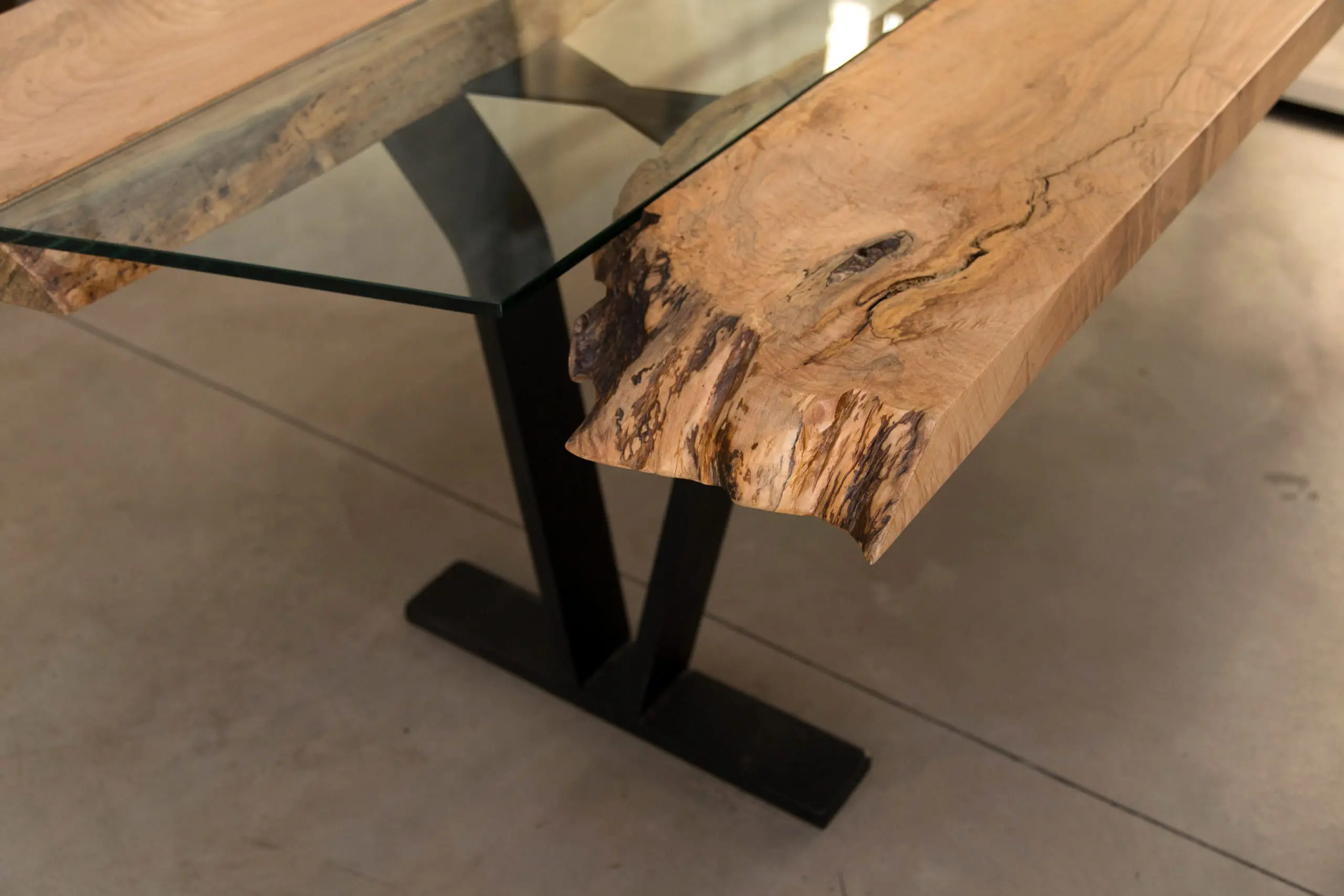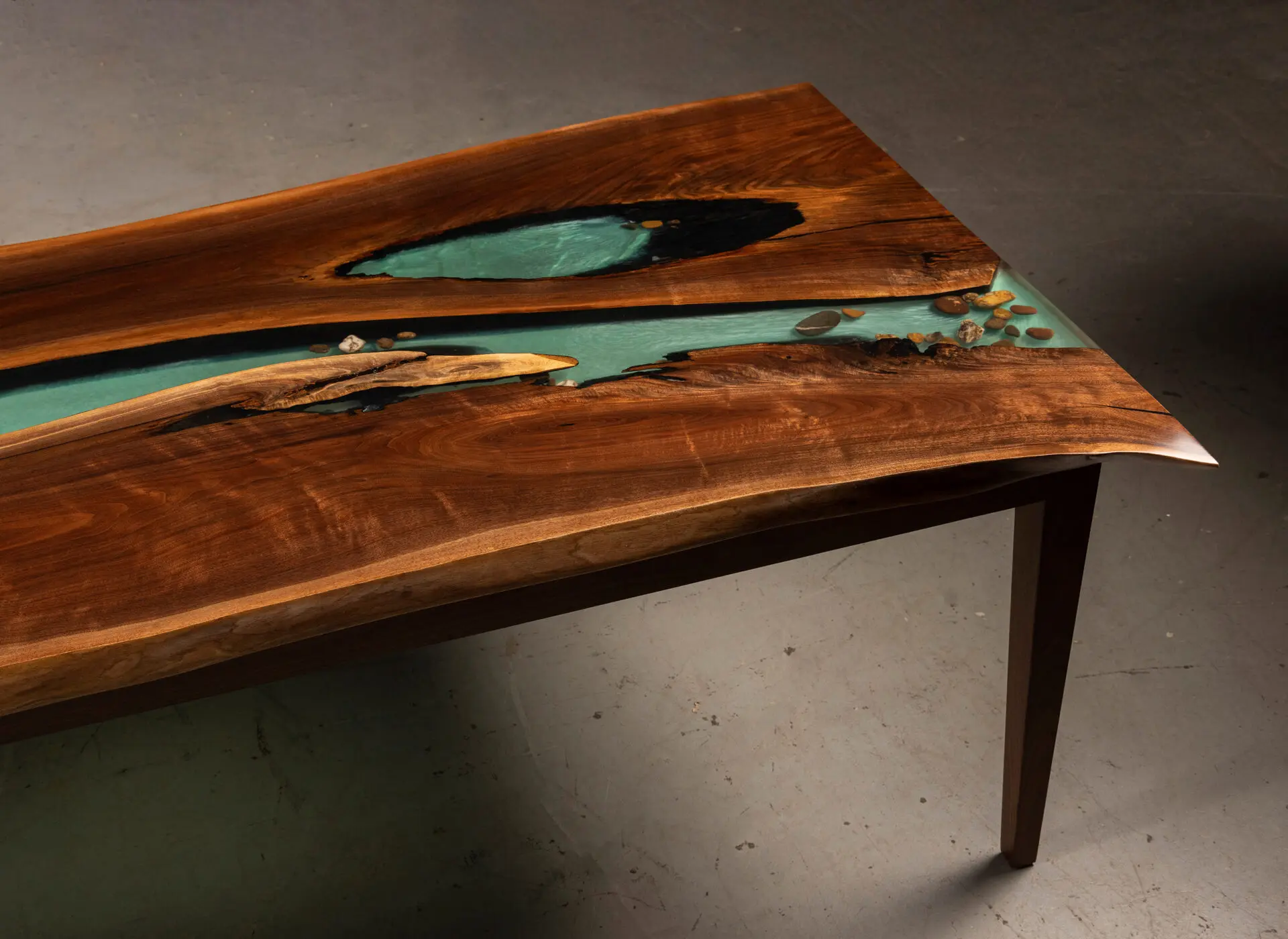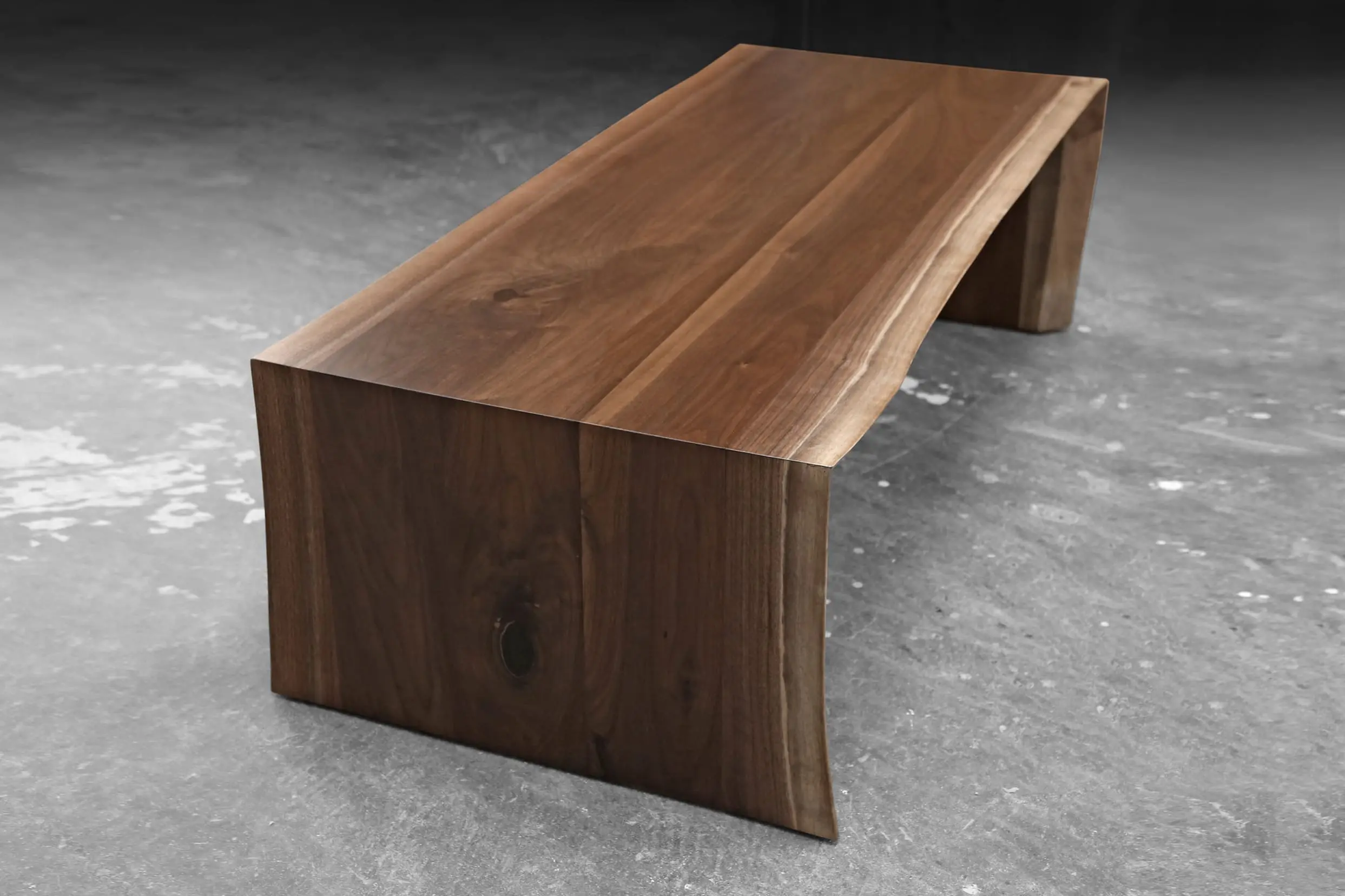Solid wood dining tables are the hallmark of fine dining, designed to bring the timeless appeal of hardwood species into residential and commercial interiors. With warm aesthetics, exceptional durability, and stylistic variety, this furniture item defines the dining room, dictating the rest of the layout. Our goal in this article is to explore different creative concepts, as we appreciate the artistic élan of luxury wooden furniture. The solid wood dining table ideas presented below offer a brief overview of style, material considerations, and manufacturing excellence, employed towards the focal point of residential and commercial dining.
The creative variety of solid wood dining room tables stems from the combination of North American hardwoods, finishing coats, and base options. Handcrafted to perfection, and unmistakably unique, each model tells a singular story. But where does the search for excellence begin? What inspires the design process, setting the stage for a luxurious and sophisticated product?
Why solid wood dining tables?
Apart from creative variety, and timeless appeal, wooden furniture provides quality characteristics that are hard to match. The solid wood dining table is sturdy and heavy, anchoring the family around a focal point that radiates warmth and style. Finished properly, and maintained occasionally, it is durable enough to last for decades.
At SENTIENT, we have experience manufacturing handmade furniture of any shape and size. Our workshop is an artistic enclave of fine craftsmanship, where premium wood slabs are turned into exceptional items. From flow pedestal models to massive communal tables, we embrace any architectural challenge on the creative spectrum.
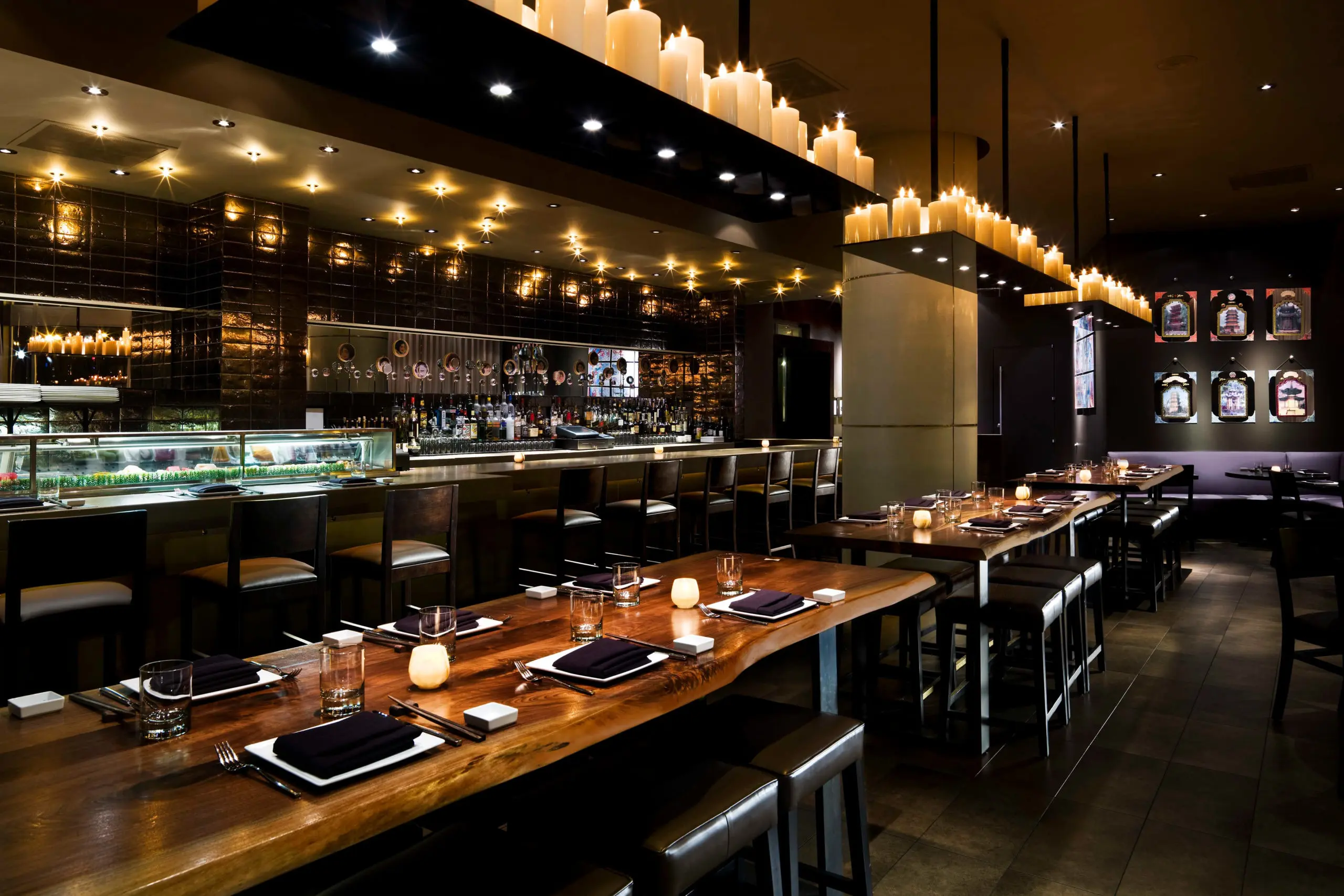
Visually impressive hardwood species
Hardwood species fill the visual canvas with endless variety. The Quercus genus provides an abundance of tight grain patterns with intricate rays and flecks. White Oak displays a grayish hue that is ideal for Scandinavian interiors, while red oak provides a light brown shade with a reddish tint.
On the other hand, Acer species pluralis, otherwise known as maple, is characterized by its light, creamy color with a reddish-brown tint. This species provides several fine hardwoods with a uniform and subtle grain pattern, indicative of their exceptional density.
Walnut, which the scientific literature recognizes as Juglans species, is popular for its rich, dark brown color. English walnut, also known as Persian walnut, offers a straight grain, whereas Black walnut and Claro walnut display a sophisticated and fiddle back pattern that is often irregular.
Mahogany and Cherry both offer a smooth and straight grain, with hue variations towards the reddish spectrum. The first is relatively free of voids and pockets, with a remarkable deep brown color, whereas the second darkens with age reaching a rich red-brown as it responds positively to sunlight exposure.
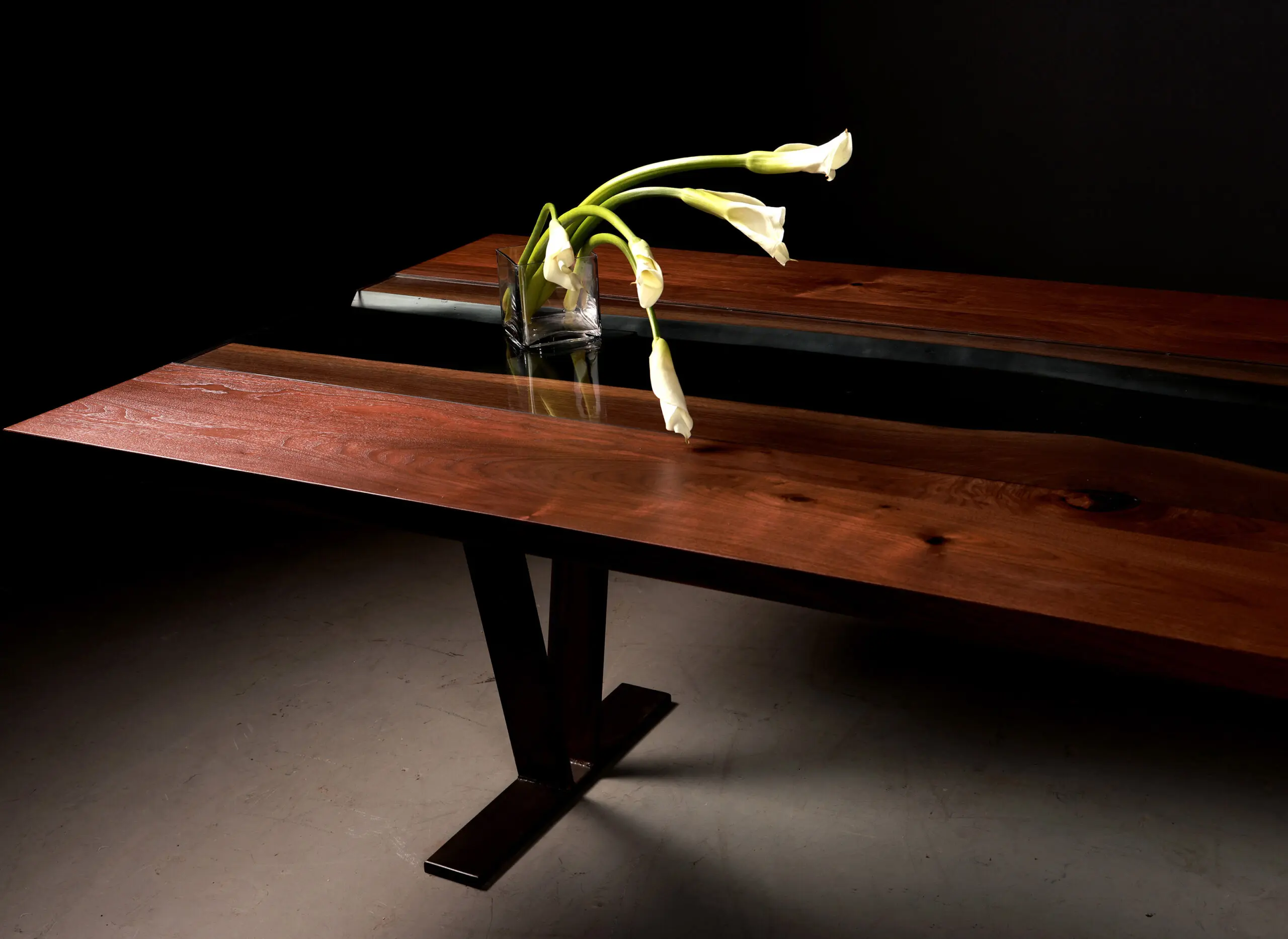
Traditional finishing options
The choice of wood is often accompanied by a corresponding finish. Apart from protecting the surface, each coat contributes to the visual narrative, highlighting the ingenuity of designers and craftsmen. Some finishing options offer matte or glossy tonalities, or accentuate the grain of the wood through a subtle or contrasting hue.
Oak, for example, will absorb oil coats readily, displaying an enhanced contrast with the grain. Maple, on the other hand, has a denser grain which is less absorbent to oil finishes such as linseed and Tung, leading to a subtler result.
Shellac provides a shiny and warm finish but is less resistant to water and temperature differences. It pairs nicely with walnut and cherry, as it adds depth to the natural color of these premium hardwoods.
Lacquer dries very fast, and provides an exceptional glossy finish that is hard and durable. It works great for walnut, where it penetrates the surface to enhance its rich, warm color, offering depth and sophistication. Nevertheless, its high gloss may highlight any imperfections, so it might be better suited for mahogany.
Polyurethane works well with most hardwoods but is especially suitable for the oak species, where it provides durable protection for their prominent grain structure.

Sophisticated finishing options
Creative finishes make for the best solid wood dining table ideas. These include many techniques and woodworking options ranging from traditional Western methods to Japanese craftsmanship.
Fuming, for example, is readily used with oak species, exposing the surface to ammonia fumes which react with the tannins to darken the original hue. Ceruse, which gives the elegant limed finish, is applied with a light-colored paste after a darker stain, to create a stunning contrast with the grain pattern.
Other creative solutions include Shou Sugi Ban and spalting. The first is where the surface of the table is charred, brushed, and sealed, to display a unique color that is of great visual interest, whereas the second involves natural exposure to fungi, and resin stabilization to preserve the unique and sophisticated patterns. Both require exceptional deliberation and skilled craftsmanship.
Different finish coats would require different methods of maintenance, but we have covered this topic in depth with our guide on live edge table maintenance.
Staining solid wood dining tables
Staining is also popular but is mainly limited to situations where designers want to change the visual characteristics of various species or enhance the grain pattern to make it more apparent. It also works in concert with many finishing options, to create a distinct visual result.
Hardwoods, unlike softer species, absorb stain evenly, without much need for pre-stain conditioners. As the stain penetrates the surface, it interacts with the wood’s natural fibers, creating a change in color. Oil-based options can penetrate deeper, offering a richer color, while water-based varieties dry quicker, providing a diverse color repertoire, while slightly raising the grain.

Base support options
Solid wood dining tables should balance the visual interest between the tabletop and the base. The creative options are numerous, offering support in hardwood, metal, or concrete, in various forms.
Handcrafted tabletops are usually paired with a central imposing base or two minimalist support structures on the sides. These can be frames, in either wood or metal, canted legs, and V-legs, for a more pronounced tabletop.
Another popular support option for solid wood dining tables is the single-side waterfall, which is a visual continuation of the hardwood surface at a 90-degree angle. Craftsmen often cut the material for horizontal and vertical placement from the same slab, to achieve a continuous grain pattern and the effect of a cascading flow.
Solid wood round dining tables are often paired with a wishbone base, as it takes up less space and leaves a lasting visual impression.
For some of our hardwood tables, we offer stone or concrete base options, which provide a dynamic contrast with the rich tonalities of dark wood species, or their elegant finish hues. These are excellent for outdoor placement as well, offering unmatched durability with little to no maintenance.
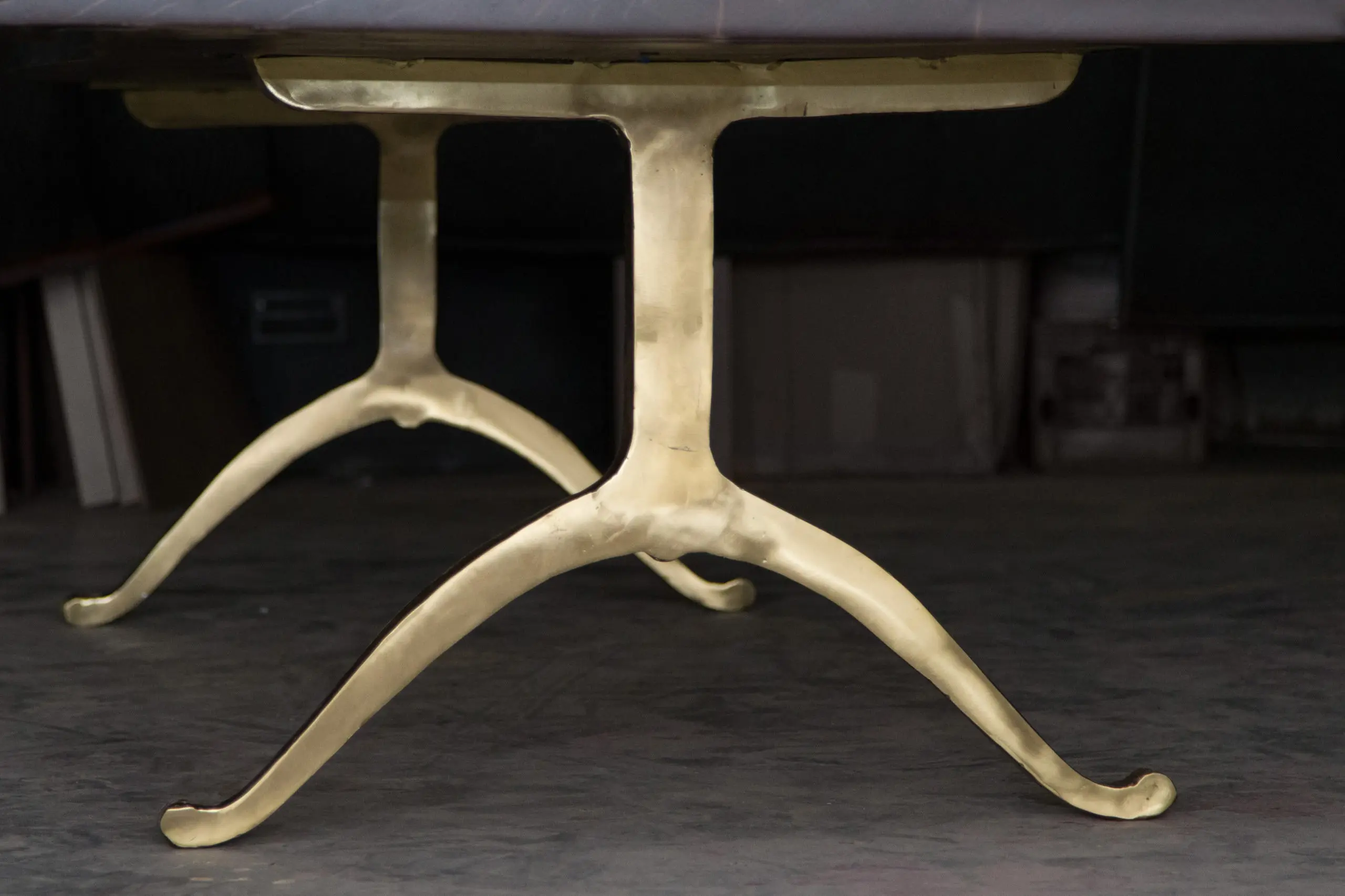
Solid wood dining table ideas with artisanal tabletops
While hardwood tabletops can provide timeless elegance even without embellishment, there are numerous options for making them even more attractive. These ideas can be incorporated with solid wood round dining tables and square or rectangular options as we
Inset glass, for example, can create a clean and transparent opening in the middle of the table, contrasting the dense slab. The wood, on the other hand, can be polished to perfection, exposing clean cuts and straight lines along the edges, or a wavy contour that mimics a serpentine flow. This is the case with the Colorado River table, where intricate curves are complemented by crisp grain and perfectly installed glass, to offer unmatched sophistication.
In other cases, the tabletop can be created by joining two wooden slabs with an epoxy solution, resulting in a stunning river table. Epoxy resin can be pigmented to whatever color the design requires, offering gorgeous gradients of blue, green, white, or even black.
Some designers love to fill the epoxy with decorative artifacts, while others encase the wooden slab in the middle, with epoxy embellishments on the sides. The resin can also flow on one side of the table, for added visual interest, achieving a waterfall design.
The live edge dining table is among the best solid wood dining tables, bringing nature into any interior by exposing the organic shape of premium hardwood trunks. We harvest these responsibly, from renewable sources, air-drying them for up to two years before any work begins on the model.
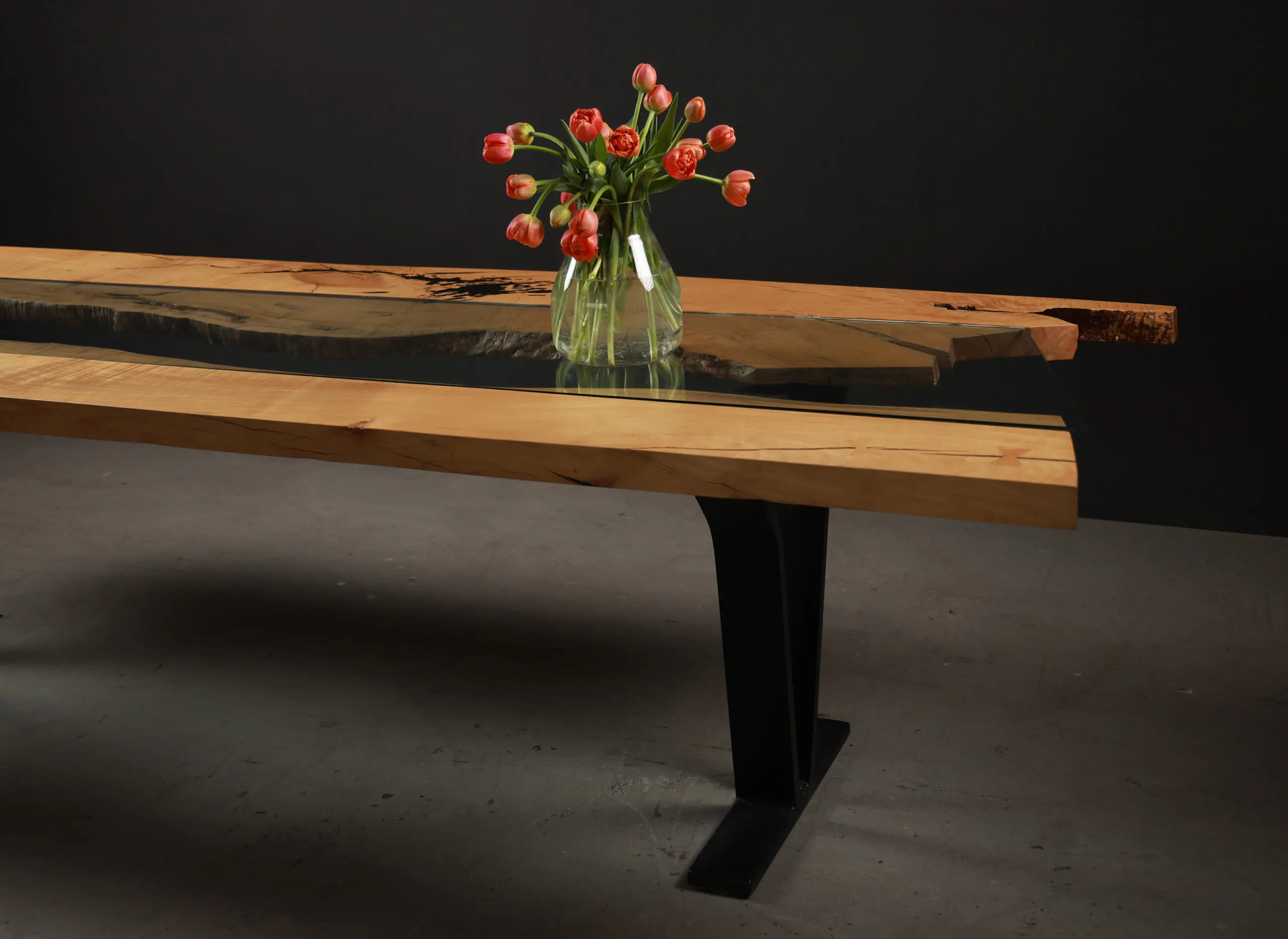
Where to buy solid wood dining tables?
Retail sellers usually offer low-quality hardwood, with less than optimal treatment and finish protection. The luxury dining table is handmade, with a lead time of up to 12 weeks, so it is best to circumvent retail and head directly to furniture manufacturers near you. They would usually offer a free consultation in their workshop, or invite you, as we do at SENTIENT, to their furniture studio.
Working with a designer
SENTIENT follows the New York design scene very closely, and we take notice or participate directly in most industry events in the United States and Europe. Working with architects and interior designers for many years, we have come to realize that there is no shortage of solid wood dining table ideas, as the concept is open-ended to allow for unlimited creative interpretation. Most of our clients bring detailed architectural drawings, or perhaps photo inspirations, on which we can comment with expertise and offer creative solutions with technical and financial feasibility.
Solid wood dining room tables are perhaps the most important furniture item in the home and an heirloom of generational artistic appreciation with timeless elegance. Sleek and minimalist, or decorative and rustic, the hand-crafted table is an anchor point for the entire family and a focal piece from which the dining room layout gets an aesthetic direction.

